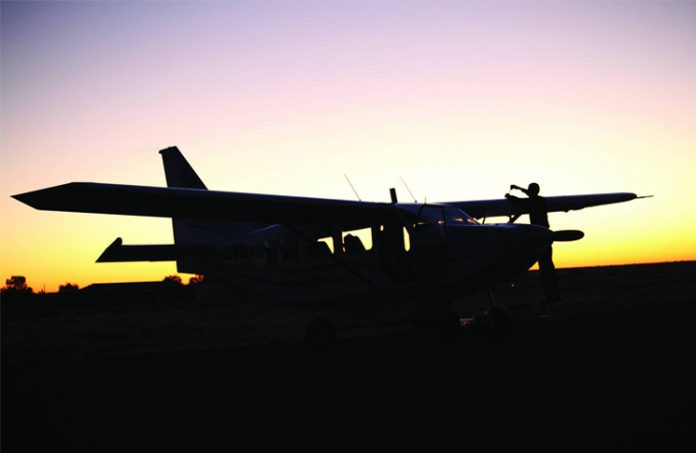Aviation English has borrowed from the French two important terms—Mayday, from venez m’aider, meaning ‘come and help me’, and Pan Pan (from panne, meaning a breakdown).
Mayday, of course, means that there is an imminent danger to those on board. Pan Pan is used to alert others that a craft is in difficulties, but no immediate threat to life.
The case of Avianca Flight 52, which ran out of fuel and crashed short of Kennedy Airport in New York in 1990 killing 73, is a classic case of what can happen when there is poor communication about an aircraft’s fuel state. The pilots failed to use language which conveyed the urgency of their plight, and consequently were not given the priority they needed to land safely.
Between 2007 and 2016, the Australian Transport Safety Bureau (ATSB) recorded 380 fuel-related accidents or incidents for commercial air transport, and 293 for general aviation. In the 10 years to 2000, there were a total of 139 fuel-related accidents reported to the ATSB, with the loss of 49 lives.
These figures include incidents of fuel exhaustion—in other words, where there was no usable fuel remaining.
Mayday is a cut-through word. The Aeronautical Information Publication (AIP) already specifies that a pilot in command is required to broadcast Mayday Mayday Mayday fuel:
when the calculated usable fuel predicted to be available upon landing at the nearest aerodrome where a safe landing can be made is less than the planned fixed fuel reserve and as a result of this predicted fuel state, the aircraft requires immediate assistance. (ENR 1.1, 11.9.6.10).
On 8 November this year, the fixed fuel reserve for small piston aeroplanes will change from a recommended 45 minutes to a required 30 minutes (45 minutes at night), plus any specified variable reserve.
Pilots who expect to be landing with less than their fixed reserve will be required to broadcast ‘Mayday Fuel’, to alert air traffic control and other traffic that they require priority to land as quickly as possible.
The new rules are based on an International Civil Aviation Organization (ICAO) recommendation, and in line with the practice in many other countries.
In summary, the new fuel rules will be safer, and in some cases simpler, by clarifying what pilots must legally do. Many pilots and operators are already using them as standard operating procedure as they have been in CASA guidelines for some time.
The changes are:re-introduce a mandatory fixed fuel reserve
- reduce fixed fuel reserve requirements for day VFR flights in small piston aeroplanes
- require pilots to conduct in-flight fuel management with regular fuel quantity checks and, if required, declare Mayday Fuel
- introduce ‘additional fuel’ which simplifies the planning requirements for fuel contingencies. The additional fuel calculation is based on whichever of the contingencies requires the greater amount of fuel plus a reserve fuel of 15 minutes plus an approach and landing allowance
- more closely align Australia’s fuel rules with international best practice recommended by the International Civil Aviation Organization (ICAO).
Mayday Fuel alerts other airspace users to a potential fuel problem facing an aircraft in their vicinity and ensures priority is given to that aircraft to reduce the chances of an accident.
As with the reporting of any incident, the aim is to enhance safety and provide timely assistance, not to punish or prosecute. The declaration is an internationally recognised standard aligning Australia with ICAO standards that are designed to assist in the management of aviation safety risks.
CASA has published guidance material on the new fuel rules to help the aviation community understand the rules before their introduction on 8 November 2018.
For private pilots operating under visual flight rules (VFR) only, there’s a draft of the fuel pages that will appear in the revised Visual Flight Rules Guide (VFRG).
Fuel planning
Good fuel management begins with sound flight planning and knowing your aircraft. For private pilots in particular, the VFRG fuel pages are well worth a read. You must never plan to land with less than fixed reserve fuel.It’s important that you know your aircraft’s fuel consumption rate, because fuel gauges don’t always give an accurate reading. Fuel flow systems can accurately measure the actual amount of fuel being consumed—but their usefulness in determining fuel remaining depends on the initial amount of fuel being entered correctly.
But even if your planning is meticulous, weather and other conditions can change quickly. Include a contingency for unexpected circumstances such as an unforecast headwind, forced diversion, delayed clearance or a go-around at your destination. Remember too that your fuel consumption for an extra circuit or two will be greater than in a cruise.
Mayday means ‘come and help me’. Hopefully it’s something you’ll never need to utter—but it’s good to know that if you need to, help will indeed be available.



“require pilots to conduct in-flight fuel management with regular fuel quantity checks”
Is this a new requirement in some way where it was not previously?
[…] Safety Australia looked at the topic of Mayday Fuel in August. From 8 November this year, the fixed fuel reserve for small piston aeroplanes will […]
I’m glad that the min fuel is now Mandatory, wont stop the cowboy idiots out there but might make some future cowboy think twice !